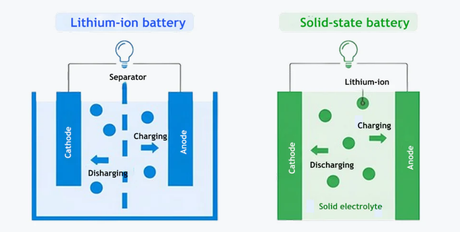Debunking 10 solar myths
Even though solar continues to grow in popularity, many people are still misinformed about a lot of aspects of solar energy. Do solar panels work when it’s cloudy? What happens when there’s an outage? Is it a sound investment? Let’s separate myth from fact.
1. Solar doesn’t work in certain climates. Solar panels do in fact work in a variety of weather conditions. Think solar panels don’t work when it’s too warm? Although yes, solar panels do operate best in cold temperatures, solar panels will continue to operate when it’s hot out. They will just function at reduced efficiency rates when it’s very hot. On a 25 °C day, there would be around an 8% to 10% reduction in power output. On a very hot day above 40 °C a solar panel can reduce output by 12% - 18%.
2. Solar panels cost too much. Many people think solar is too costly and out of reach. The reality is that solar technology continues to improve in efficiency and drop in price. Thanks to the availability of solar panel kits, going solar has never been more affordable.
Don’t forget that solar installations can be viewed as an investment. When you install solar panels on the roof of your home, it actually increases the property value. Also, you’ll want to take in consideration the upfront and lifetime costs and savings. For example, you could be saving a lot of money on monthly utility costs by going solar.
3. Solar energy can power my home when the power goes out. Many people go solar because they want to become more energy independent and ensure reliable access to energy. However, just because you have solar panels doesn’t mean you’ll be able to access power in the case the grid goes down. If you want to ensure power during an outage, you’ll need to have battery storage and the ability for your system to disconnect from the grid.
If you have a grid-tied system, then you most likely will not be able to access power during a blackout. This is because it would be dangerous for your system to be running and pushing energy into the grid while utility workers are out trying to repair the system.
If you have an off-grid or hybrid system with battery storage, then you typically will be able to keep the lights on during a grid outage.
4. Solar panels won’t work when it’s cloudy. Contrary to popular belief, your solar panels will still collect energy on a cloudy day. Solar panels work by collecting visible light and clouds still reflect visible light from the sun. So just because the sun may be hidden by clouds, you’ll still be able to collect energy.
5. Installing solar is complicated. Going solar has never been easier. As a result, more and more people are choosing to go the DIY route when it comes to installing solar on their home, caravan, or boat. Installing a small-scale, off-grid solar system can easily be done on your own with a Renogy solar panel kit, which includes most of the necessary components you’ll need to go solar, including solar panels, a charge controller, mounting hardware, combiner boxes, and circuit breakers. You’ll just need to purchase batteries and an inverter to complete your kit.
6. Solar panels use more energy to manufacture than they actually produce. This is a common argument solar critics like to use. Yes, solar panels are made of different materials including glass, aluminum, silicon, and some plastics. Each of them require different levels of resources and energy to manufacture. But unlike relying on coal, solar panels do not emit any greenhouse gases while operating.
How many years of use does it take to repay the energy required to manufacture it? A typical solar panel will generate enough energy within three to four years in order for it to repay the energy used to create it. As efficiency increases over the next decade, that time period will be even shorter.
7. Solar panels are ugly. As technology improves, so does the physical appearance of solar panels. Highly efficient monocrystalline panels, which are dark grey in color, often blend in seamlessly with the existing roof materials. Additional flexible solar panels can be mounted to a roof and because they are only .08 inches thick, they can remain out of sight from passersby. They are also lightweight, flexible, and ideal for mounting on surfaces that are not flat.
8. I have to install solar panels on my roof. There are plenty of portable solar panel options that do not require you to drill holes into your roof. Instead of mounting to the roof, portable solar panels are most often available in the form of folding suitcase panel kits that can be set up on the ground. Portable solar panels are lightweight, easy-to-handle, and affordable. If you can’t justify installing roof mounted solar panels, portable solar power systems are a great option.
9. Solar requires lots of maintenance. Solar panels require very little maintenance. We recommend cleaning off your panels once a year or so. In many cases, rain throughout the year is enough to keep them clean. You’ll also want to check for any debris that may have collected near or on the panels, and take note of any wear and tear on the panels themselves or any wiring.
Don’t forget about your batteries. Flooded lead acid batteries do require you to monitor the water levels and add water to the battery on a regular basis. On the other hand, sealed lead acid batteries and lithium iron phosphate batteries require little to no maintenance.
10. Mounting solar panels will damage my roof. It’s true that mounting solar panels does require the right mounting hardware in order to safely and securely attach the panels to your roof. However, if done correctly, solar panel installation should not damage your roof or the surrounding structure. Additionally, technology has continued to improve where mounting solar panels has never been easier. In some cases, solar panels can actually protect your roof instead of inflicting any sort of damage.







![What Is a DC to DC Battery Charger [Comprehensive Guide]](http://au.renogy.com/cdn/shop/articles/IMG_3829_bd86de74-31d6-49fd-b9d5-265bb723091d.jpg?v=1757582605&width=460)


